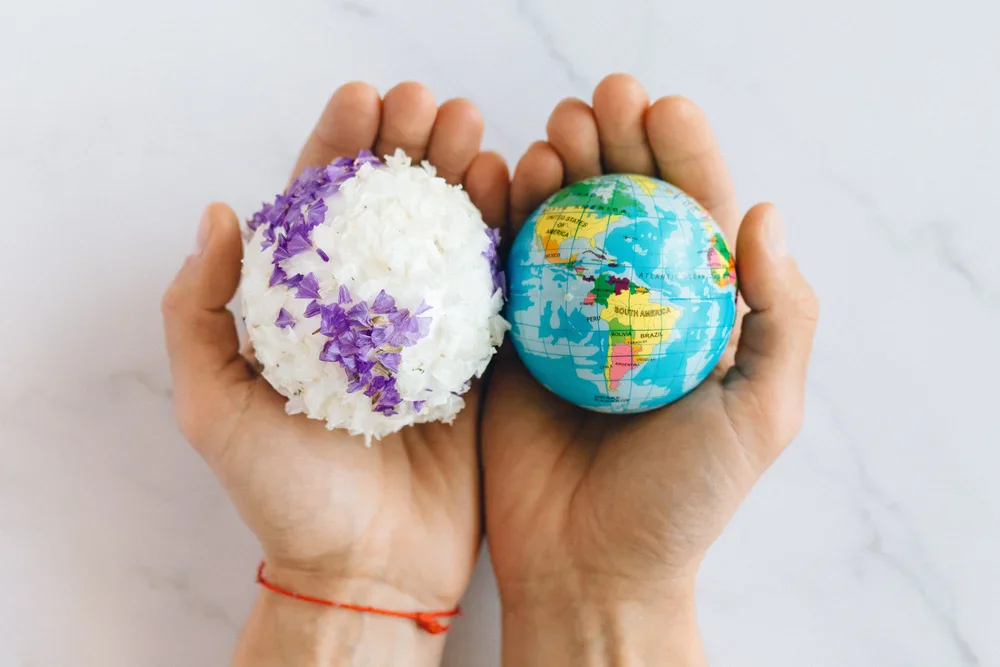‘Cosmetics’ is a term that covers all products used to protect, clean, and enhance the look, feel, and smell of human bodies. The influence of cosmetics products is restricted to the surface and cannot alter our bodies’ internal workings. However, packaging pollution caused by cosmetics has deteriorated the health of our planet, both on the surface and within. The global cosmetics market was valued at nearly $508 billion in 2018 and is projected to reach about $758 billion by 2025. Due to the eternal human desire to look younger as we get older, coupled with the barrage of daily ads we see featuring near-perfect models, the cosmetics industry is ageing well!
With youth also comes ignorance and we continue to fuel this industry’s growth, blissfully unaware of the environmental impact of cosmetics. The cosmetics industry uses more than 120 billion units of packaging every year, most of which is non-recyclable and ends up in landfills or are found floating in our oceans. The plastic packaging breaks into tiny microplastics and ultimately enters the human body through the water we drink and the fish we eat. There will be more plastic than fish in the oceans by 2050, according to the Ellen MacArthur Foundation. So, ‘cosmetics’ have made a transition from the surface to inside our bodies. Are we seriously ok with this?
Ironically, the production of plastic also causes tiny pellets to enter the marine ecosystem. Toxic from start to finish……..sorry, plastic is forever! Plastic will never disappear and continue to plague our planet in different ways. Blood red lipstick might make us look beautiful, but its packaging makes the Earth bleed, metaphorically. What a disservice we are doing to our one and only home! The time for lip service is long gone, we need to change NOW.
The environmental impact of cosmetics packaging is felt most by the voiceless, our marine life. Recent research by a professor at the University of Exeter indicated that chemicals from cosmetics and their plastic packaging are effectively changing the gender of some fish! In tests conducted across 50 different sites, about 20% of male fish species exhibited feminine characteristics. These freshwater male fish had inferior sperm quality, reduced aggression, and some even produced eggs. Over time, this will decrease their reproduction rates and eventually cause their extinction. Let’s ask ourselves a simple question – Is this fair?
As we find ourselves in a race against time to reach ‘Net Zero’ emissions, we must mass adopt plastic-free materials immediately. Although consumers are more eco-conscious today and willing to pay a premium for plastic-free bags, boxes and more, governments and corporations aren’t acting fast enough. “The world provides enough for every man’s need, but not enough for every man’s greed” – Mahatma Gandhi. Alternative materials can solve our problem, all we need is the collective will to change. To combat cosmetics packaging pollution, we simply need to look at abundantly available materials that don’t pollute our planet.
Several countries have already banned single-use plastic bags and we don’t see a good reason for them being used anywhere, anymore, at all. A whopping 2 million plastic bags are used worldwide, every minute! Paper bags made using agricultural fibers can be used several times, are far more durable, and have much better printability than single-use, flimsy, and highly-polluting plastic bags. Most cosmetics products are packed in boxes that contain plastic and this is also something we can change immediately.
Sustainable alternatives to plastic emit far less carbon during their production and help repair the damage caused to the planet by plastic. As mentioned earlier, plastic is forever and non-compliant with all end-of-life practices. Plastic can’t really be recycled or composted and just hangs around our planet, harming it endlessly. How does that make you feel? Cosmetics packaging pollution is easier to combat than we think and causes more damage than we can imagine.
The widespread usage of plastic materials started after World War 2 and today, we find ourselves fighting a war against plastic. Our parents and grandparents fought that war to leave us a peaceful world. Similarly, we must defeat climate change to leave a healthy planet for our children and grandchildren. Let’s make cosmetics packaging plastic-free before there’s nothing left to beautify!





